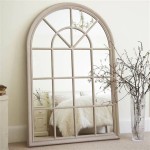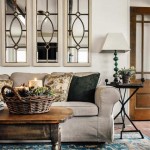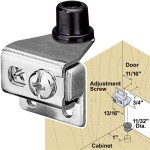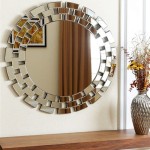Building A Frame For A Mirror
Framing a mirror is a rewarding project that enhances the aesthetic appeal of any space. It transforms a plain looking glass into a decorative element, adding character and reflecting personal style. This article provides a comprehensive guide to constructing a frame for a mirror, covering material selection, accurate measurements, construction techniques, and finishing touches.
Material Selection and Preparation
The choice of materials significantly impacts the final look and durability of the mirror frame. Wood is a popular choice due to its versatility, availability, and ease of working with. Consider the type of wood carefully. Softwoods like pine are cost-effective and easy to cut and nail, but they are more susceptible to dents and scratches. Hardwoods like oak, maple, or cherry offer greater durability and a more refined appearance, but they are more expensive and require sharper tools. MDF (Medium-Density Fiberboard) provides a smooth surface for painting, but it is not as resistant to moisture as solid wood.
Beyond the type of wood, consider the desired finish. If painting the frame, choose a wood that takes paint well, such as poplar or maple. If staining, opt for a wood with an attractive grain pattern, like oak or cherry. Consider the existing décor of the room where the mirror will be placed to ensure the frame complements the overall aesthetic. Once the wood is chosen, obtain the necessary amount, accounting for potential waste from cuts and mistakes.
Preparation is crucial for achieving a professional-looking frame. Begin by inspecting the wood for any defects, such as knots, cracks, or warping. Remove any loose knots or fill them with wood filler. Sand the wood surfaces smooth, starting with a coarser grit sandpaper (e.g., 120-grit) and progressively moving to finer grits (e.g., 220-grit). This ensures a smooth, even surface for painting or staining. Wipe the wood clean with a tack cloth to remove any sanding dust before proceeding.
Accurate Measurement and Cutting Techniques
Precise measurements are paramount for creating a frame that fits the mirror perfectly. Measure the mirror's dimensions accurately, both the height and width, at multiple points to account for any slight variations. These measurements will determine the inner dimensions of the frame. Add the desired width of the frame pieces to the mirror dimensions to calculate the overall outer dimensions of the frame. For example, if the mirror is 24 inches wide and 36 inches high, and the frame pieces are 2 inches wide, the outer dimensions of the frame will be 28 inches wide and 40 inches high.
When cutting the wood pieces, accuracy is essential. Use a miter saw for making clean, precise cuts, particularly for the corners of the frame. A miter saw allows for cutting angles, typically 45 degrees, to create perfectly joined corners. Set the miter saw to the correct angle and carefully align the wood piece before making the cut. Ensure the cut is straight and square. If using a hand saw, use a miter box to guide the saw and ensure accurate angle cuts. Exercise caution when using power tools and wear appropriate safety gear, including eye protection and hearing protection.
For a seamless fit, consider using a miter gauge on a table saw. This provides even greater precision when cutting the mitered corners. After cutting each piece, dry-fit the frame around the mirror to check the accuracy of the cuts. Make any necessary adjustments before proceeding to the next step. Label each piece to ensure they are assembled in the correct order. Incorrectly assembled pieces can result in a misaligned frame.
Frame Assembly and Reinforcement
Once all the frame pieces are cut, assembly can begin. There are several methods for joining the corners of the frame, each offering varying degrees of strength and visual appeal. Mitered corners, joined with wood glue and nails or screws, are a common choice. Apply a liberal amount of wood glue to the mitered surfaces and carefully align the pieces. Use clamps to hold the pieces together securely while the glue dries. Reinforce the corners with nails or screws, driven at an angle into the joint. Alternatively, use a biscuit joiner to create slots for biscuits, which add strength and alignment to the joint. Biscuits are small, oval-shaped pieces of compressed wood that are inserted into the slots and glued in place.
Another option is to use corner clamps specifically designed for mitered corners. These clamps apply even pressure to the joint, ensuring a tight bond. Regardless of the chosen method, ensure the corners are square and flush. Use a square to check the angles of the corners and make any necessary adjustments while the glue is still wet. Allow the glue to dry completely before removing the clamps, typically for at least 24 hours.
For added reinforcement, consider using corner braces or metal mending plates. These are attached to the back of the frame and provide extra support to the corners, preventing them from separating over time. Choose corner braces or mending plates that are appropriate for the size and weight of the mirror. Secure them with screws, ensuring they are flush with the surface of the frame. This reinforcement is particularly important for larger mirrors or frames made from softer woods.
Finishing and Securing the Mirror
The finishing stage is where the frame takes on its final appearance. After the glue has dried and the frame is assembled, sand any rough edges or imperfections. Use progressively finer grits of sandpaper to achieve a smooth, even surface. Wipe the frame clean with a tack cloth before applying any finish.
Painting is a popular choice for finishing a mirror frame. Apply a primer coat to the wood to seal the surface and provide a better base for the paint. Choose a primer that is compatible with the type of paint being used. Allow the primer to dry completely before applying the paint. Apply multiple thin coats of paint, allowing each coat to dry before applying the next. This results in a smoother, more durable finish. Lightly sand between coats with fine-grit sandpaper to remove any imperfections.
Staining is another option for finishing a mirror frame, highlighting the natural grain of the wood. Choose a stain that complements the wood and the surrounding décor. Apply the stain evenly, following the manufacturer's instructions. Wipe off any excess stain to prevent a blotchy appearance. Allow the stain to dry completely before applying a protective topcoat, such as varnish or polyurethane. This will protect the stain and provide a more durable finish. Apply multiple thin coats of the topcoat, sanding lightly between coats.
Once the frame is finished, secure the mirror within the frame. There are several methods for doing this. One option is to use mirror clips, which are small metal or plastic clips that hold the mirror in place. Attach the clips to the back of the frame, ensuring they are evenly spaced and securely hold the mirror. Another option is to use glazing points, which are small metal triangles that are inserted into the frame and press against the back of the mirror. Use a glazing point tool to install the glazing points, ensuring they are securely embedded in the wood. Silicone adhesive can also be used to secure the mirror to the frame, providing a strong and permanent bond. Apply a thin bead of silicone adhesive to the back of the mirror and carefully position it within the frame. Allow the adhesive to dry completely before handling the mirror.
Finally, install hanging hardware on the back of the frame. D-rings and picture wire are a common choice. Attach the D-rings to the back of the frame with screws, ensuring they are securely fastened. Thread the picture wire through the D-rings and adjust the length to achieve the desired hanging angle. Ensure the wire is strong enough to support the weight of the mirror. Consider using heavy-duty picture hooks or anchors to hang the mirror securely on the wall, especially for larger and heavier mirrors.

How To Build A Mirror Frame Sunshine And Rainy Days

How To Build A Mirror Frame Diy Ideas Glass Doctor

Cool Diy Framed Mirror From A Blah Builders Sawdust Paper Scraps

Diy Mirror Frame Just A Girl Blog
:max_bytes(150000):strip_icc()/kaylasimonehome-905941da7dd04a08af07c415df2a1fd8.jpeg?strip=all)
20 Diy Mirror Frame Ideas To Inspire Your Next Project

Diy Full Length Mirror Frame

Build A Wood Mirror Frame With This Easy Diy Building Bluebird
Frame Large Mirror Diy Project

Build A Diy Round Mirror Frame Basic

Diy How To Add A Frame Builder Wall Mirror








